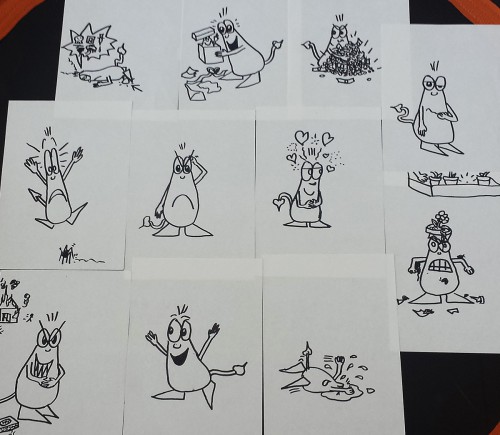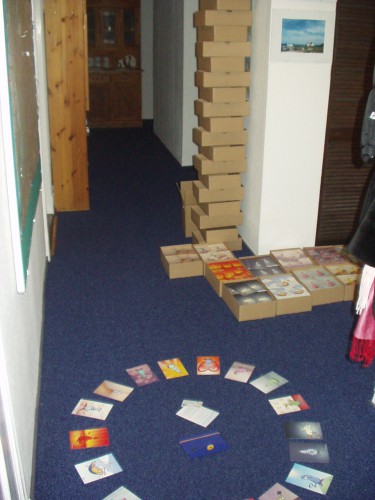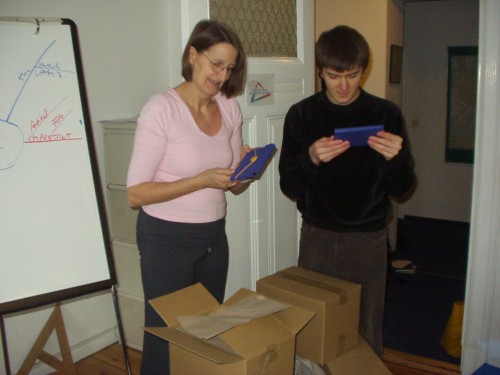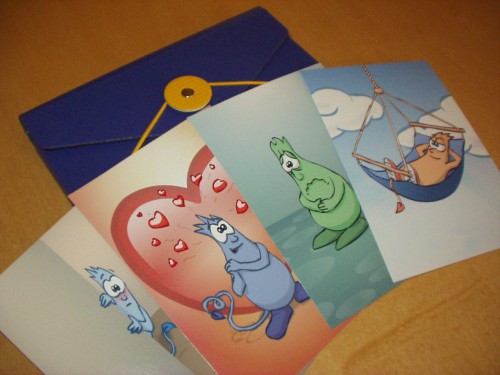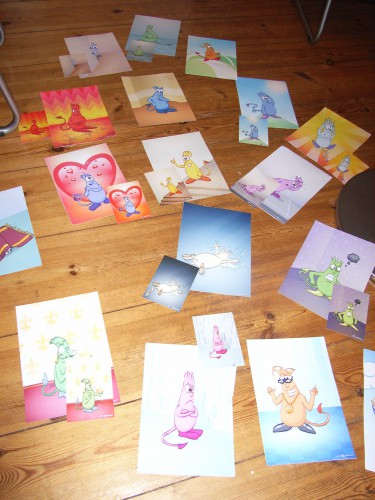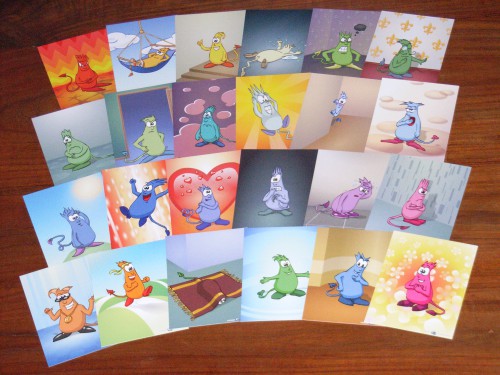I am Lilli Höch-Corona, inventor or the Gefühlsmonster ®Cards. Here how it came about:
In 1996, I had asked fourth graders about different feelings and only received “cool” and “uncool” as a response. For the purpose of giving children a suggestion to address a larger number of feelings and to differentiate them more, I asked my son Christian to portray the comic monster, which he had drawn for me when he was 13 years old, with different emotional states.
More about me: https://lillihoechcorona.de/en/home/
First generation in black and white
With the help of this “first edition” of the Gefühlsmonster cards in black and white, children could immediately identify and name different feelings. Since I liked the cards so much, I used them in my further training courses. Before starting with the topics of nonviolent communication or dealing with feelings in the mediation, I laid them out in the middle of the floor. The atmosphere which arose – first of all everybody started to look at the cards and laughed at the images – was very supportive for the following conversations.
I was repeatedly asked whether we also sold the cards. My son began to digitally draw the “Gefühlsmonster “, and I thought about which publisher I wanted to contact to submit them. Finally, we decided to publish and sell the cards ourselves. A long period of development started, in which colleagues and friends supported us with their feedback – our heartfelt thanks to all of them! At this point my respectful thanks to Marshall Rosenberg, whose concept of “feelings are the children of needs” has become for me an essential basis of mediation and dealing with differences. Working with nonviolent communication was the second trigger for developing these feeling cards!
A few findings from the time of development:
- The images of “difficult”, “negative” feelings bring more laughter than those of the “positive” ones.
- There are facial expressions which match a lot of “feeling words”, such as angry, suspicious, cranky, grumpy, disappointed, frustrated, defiant. Or quiet, confident, balanced, cheerful, jovial, carefree, calm, relaxed.
- Others, such as desperate, can at most be labelled as devastated. Or bored as tired.
- Feelings like relaxed, happy, confident are more difficult to portray than emotions like bored, enthusiastic, angry.
Eventually, the printer facilitated our considerations, how many “Gefühlsmonster “ we wanted to issue: 18 cards was exactly the amount that could be printed without any material waste.
The second generation of the Gefühlsmonster
The second edition (November 2007), inspired by our customers’ feedback, comprised 24 cards: more positive feelings, some of which can be interpreted differently, and the “cool card” which we could not include in the first edition due to lack of space.
The cards are now available in three formats: as before in postcard format, in A4 for use with larger groups and in business card format to work at the table.
The cards and the name Gefühlsmonster have been copyrighted.
In 2009 we introduced the numbering of the cards which facilitates the documentation of the selected cards.
In 2010 we chose anthracite portfolios with embossed Gefühlsmonster logo instead of the original blue ones. We have been collaborating with the environmentally friendly office company memo from the beginning, luckily still with the same contact person who supports us to the best of her ability in developing the Gefühlsmonster boxes.
In 2012 then came the last, for the time being, monster number 25.
